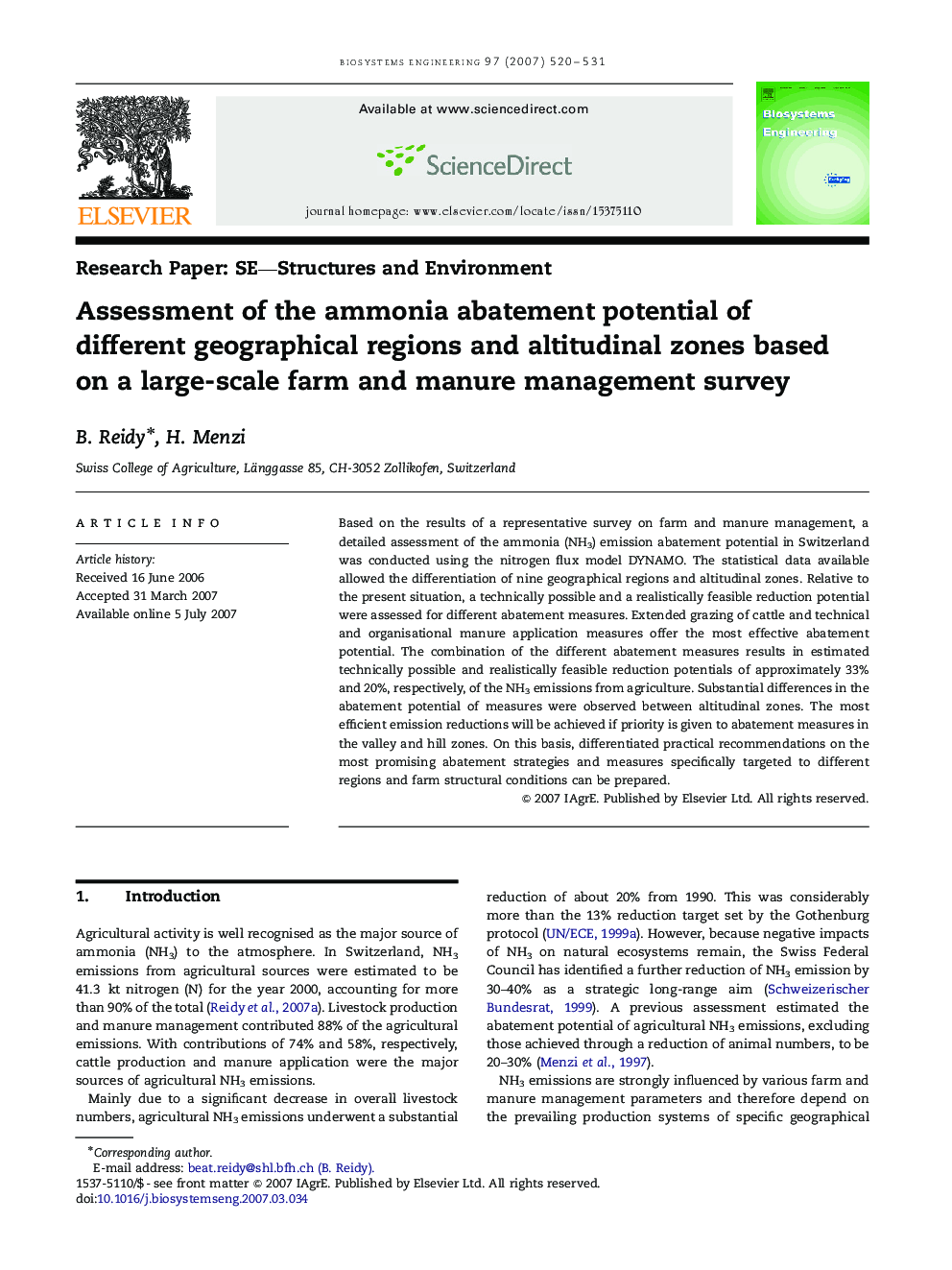| Article ID | Journal | Published Year | Pages | File Type |
|---|---|---|---|---|
| 1712548 | Biosystems Engineering | 2007 | 12 Pages |
Based on the results of a representative survey on farm and manure management, a detailed assessment of the ammonia (NH3) emission abatement potential in Switzerland was conducted using the nitrogen flux model DYNAMO. The statistical data available allowed the differentiation of nine geographical regions and altitudinal zones. Relative to the present situation, a technically possible and a realistically feasible reduction potential were assessed for different abatement measures. Extended grazing of cattle and technical and organisational manure application measures offer the most effective abatement potential. The combination of the different abatement measures results in estimated technically possible and realistically feasible reduction potentials of approximately 33% and 20%, respectively, of the NH3 emissions from agriculture. Substantial differences in the abatement potential of measures were observed between altitudinal zones. The most efficient emission reductions will be achieved if priority is given to abatement measures in the valley and hill zones. On this basis, differentiated practical recommendations on the most promising abatement strategies and measures specifically targeted to different regions and farm structural conditions can be prepared.
